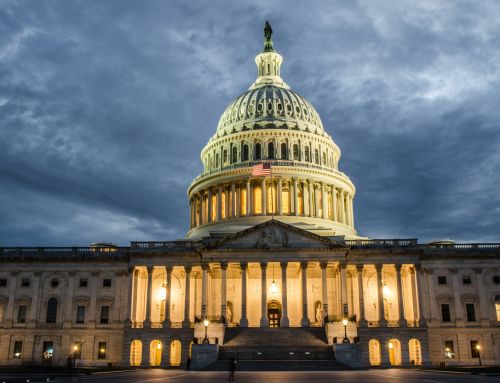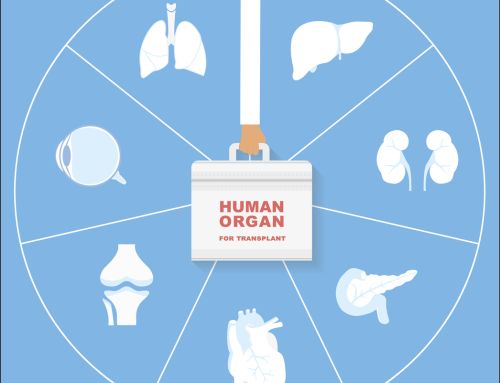
Written by Jackson Williams, JD, DPC Vice President of Public Policy
Medicare’s administered pricing system has never had to deal with labor scarcity before.
Fifteen years ago, the Institute of Medicine issued its report, “Retooling for an Aging America: Building the Health Care Workforce,” that warned of looming health workforce shortages due to demographic changes. The era foreseen by that report has likely arrived.
Labor shortages are beginning to impact patient care. Media reports indicate numerous instances of hospitals declaring “contingency standards of care” or ordering ambulance diversions due to staffing shortages.
I’m an advocate for patients who have end-stage renal disease (ESRD), who are canaries in the coalmine for the health care system. Most Medicare beneficiaries who are intermittent users of health care facilities will probably have no idea when care is not timely or delivered to standards. But because patients with ESRD visit their dialysis facilities 3 times per week over many years, they instantly recognize when something is amiss, as well as the potential health consequences.
A Dialysis Patient Citizens survey of members last month found 62% of patients said recent labor shortage had an impact on their care: Of this group, 43% said that staff turnover disrupted their care, 28% reported delays to their treatment, and 7% reported they had to change shifts or facilities. In 2013, in response to a question about wait times at facilities, 14% of patients each reported increases in wait times and decreases in wait times. This year, 24% reported increases in wait times and only 11% reported decreases.
There are at least 3 dimensions to workforce shortage issue that policymakers need to consider:
The pool of workers available for health care jobs is shrinking. Over the next decade, the number of people of working age in the United States will increase by only 3 million (∼1%) while the 65-and-over population will rise by 17.5 million (30%), according to World Bank projections. A recent report from Indeed and Glassdoor observes, “Fewer people of working age mean the supply of workers will dwindle. Combine this aging population with other trends, such as reduced immigration, and the stage is set for chronic recruiting challenges.”
“Despite looming talks of recessions,” the report’s authors continued, “Indeed and Glassdoor economists believe that hiring will remain challenging for years to come, driven by demographics and evolving preferences. Workers will continue to have the leverage to press for higher pay, stronger benefits, scheduling flexibility, and a variety of other perquisites.”
The pool of candidates for health care occupations could potentially shrink further, given the decreases in standardized math and reading scores for fourth and eighth grade students and the doubling of students considered chronically absent since pandemic-era disruptions at schools.
Jobs that are challenging and require in-person performance at a fixed workplace will likely require a premium in salary over those that do not require commuting. The Wall Street Journal recently reported that head counts at firms allowing at least 1 day of remote work increased 5% in May 2023 from June 2022, while those at fully in-person companies gained only 2.6%, on average.
Complicating matters is the fact that health care occupations are not the only essential jobs in our economy. Education, law enforcement, and transportation also have front-line jobs that government must fund. Nevertheless, we need a commitment from government that essential health care occupations will be no less remunerative, nor as remunerative, but more remunerative than nonessential jobs, in accord with American values of compassion and belief that access to health care should be available to all.
Medicare’s administered pricing systems are designed for abundance, not scarcity. It is not clear if Medicare’s traditional price-setting processes are agile enough to adapt to evolving conditions. Medicare’s administered pricing system has never had to deal with labor scarcity before. According to Bureau of Labor Statistics figures, wages and salaries increased 9.7% over the 2 years ending in March 2023. However, this year’s Medicare updates for hospitals and dialysis facilities were 3.1% and 1.7% respectively. Between this year’s paltry updates and forecast errors in previous years that leave dialysis providers 4 percentage points behind actual cost increases and hospitals 3 percentage points behind, payments are lagging changes in the labor market.
Also notable is that market basket forecasts by CMS contractors do not jibe with others’. McKinsey & Company, who observed a “worsening clinical labor shortage,” issued projections for health care labor inflation at 10% for 2022, 6% for 2023, and 3.5% for each year thereafter.
Matthew Fiedler of the USC-Brookings Schaeffer Initiative for Health Policy observes that when annual payment updates do not account for prior forecast errors, “Medicare’s prices will not experience significant ‘catch-up’ growth. A corollary is that the real prices Medicare pays for most health care services will remain on a permanently lower trajectory than they would have been if the current period of elevated inflation had not occurred.”
We have reached a point where, rather than defaulting to parsimonious payments and then waiting for reports of access problems, it would be safer for CMS to begin erring on the side of more generous payments. CMS can monitor cost reports to confirm that any added dollars are spent on paying frontline workers and not going to pad profits, and claw back any overages.
Scarcity and income inequality are a formula for 2-tiered access to care. Policymakers must also begin to consider the impact that income inequality will have on health workforce and health care access. A March 4 New York Times article described the trend toward “premiumization” in our economy: “As products grow more expensive and exclusive, big swaths of the economy are at risk of becoming gentrified, raising the possibility that poorer consumers will be increasingly underserved.” The example of this that is best known is automakers cutting inexpensive, economy models to reserve scarce microchips for more profitable big-ticket models.
In the health care sphere, the fear is that, as Frank Pasquale suggested in an Annals of Health Law review article, “disparities in buying power [will divert] essential resources from the pool [as] the well-off bid away resources and opportunities from the poor.” The examples where this is already taking place, he notes, are so-called “concierge” medical practices and physicians concentrating on cosmetic procedures.
Currently, 69% of the wealth in the United States belongs to just 10% of the population. The lowest 50% of households own just 2.4% of total wealth.
Pasquale notes that the United States has maintained egalitarian access to care through “social minimum” mechanisms such as the ban on balance billing by participating physicians and the Emergency Medical Treatment and Labor Act, and “ceilings” of care, such as the ban on buying and selling organs. But these principles can’t be upheld if health care providers, particularly those serving low- and middle-income consumers, can pay only below-market wages.
A common sight at airport security lines is representatives of Clear Secure, Inc, a service that allows travelers to pay a fee to skip to the front of the queue. Employers such as Clear are increasingly competing with health care providers for the same pool of potential workers. The nightmare scenario for Medicare beneficiaries is that providers reliant on Medicare reimbursements won’t be able to compete with employers able to draw revenue from that 10% of the population holding most of the wealth, and manpower will migrate to work with less social utility, or a parallel: go-to-the-front-of-the-line health care system emerges to serve the well-off.
It cuts against the grain to suggest that health care may become underresourced when most analysts see a bloated system flush with cash. One hopes that labor challenges can be addressed by reallocating rather than adding to total expenditures. In any event, some hard problems lie ahead and the time to start work on them is now.
This article was originally published September 17, 2023, on the American Journal of Managed Care’s website.

























